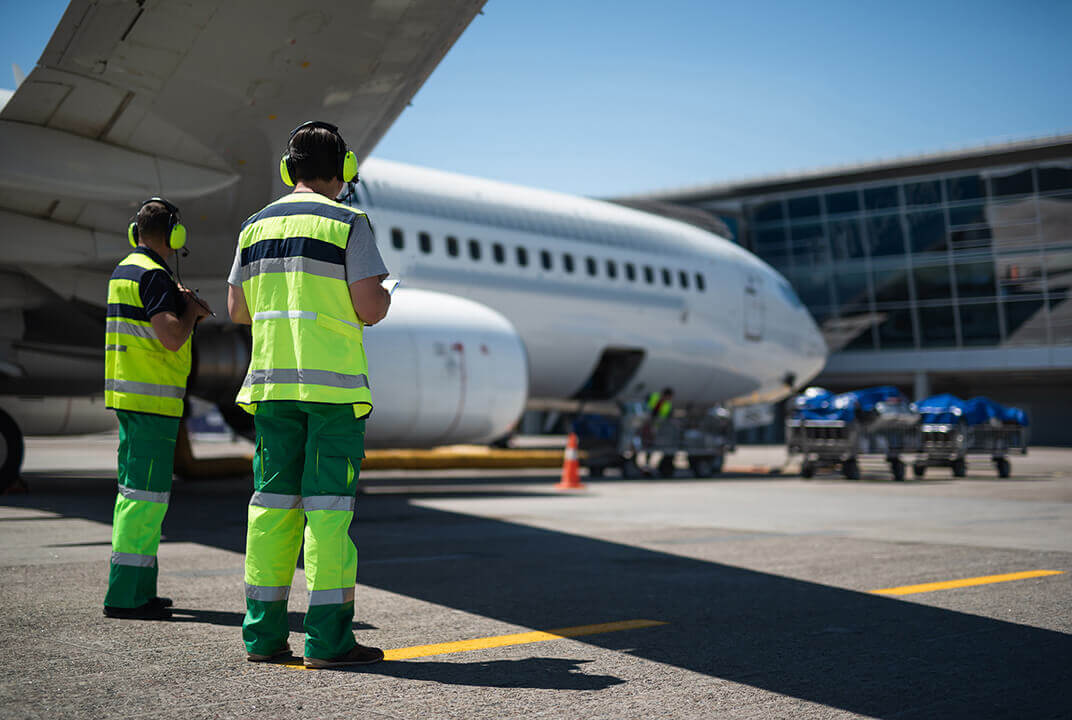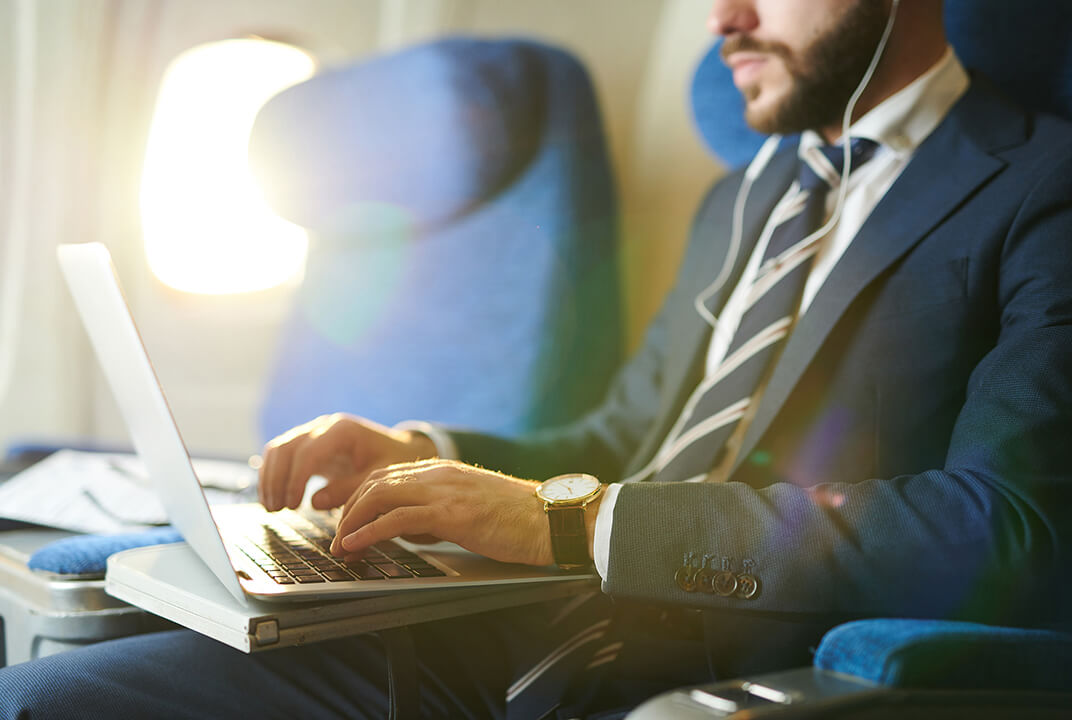Insight | 2018 – the year in review
2018 – the year in review
null
Take a look back at the news and stories that shaped an exciting year for aviation
It’s been a year of many highs – and some lows (although in the case of fuel prices, the highs were the low). So catch up on some of the stories from the last 12 months with our annual aviation debrief.
January
The year gets off to an encouraging start. IATA’s Airline Business Confidence Index reports airline CEOs in a positive mood, with 56% saying they expected profitability levels to improve over 2018.
Connectivity and digital disruption aren’t far from people’s minds across the sector. Mark Lapidus CEO of aircraft financiers, Amedeo, urges the industry to prepare for new entrants into the space. “Airlines need to be prepared to become consumer not transportation companies,” he says, warning that if they don’t, companies like Airbnb or Google, “will figure out how to connect their consumer knowledge with the physical delivery.”
Ethiopian Airlines CEO, Tewolde GebreMariam, echoes these sentiments saying airlines need to take better advantage of new technologies. He particularly looks to the rise of big data and increasing customisation.
Concerns over the future of Airbus’ superjumbo A380 subside after Emirates agrees to buy up to 36 more aircraft, in a deal that could be worth up to $16bn (£11.5bn).
It’s a good month for sustainability in the sector…
Norway’s airport operator, Avinor, announces that it aims for all the nation’s short-haul flights to be 100% electric by 2040.
Qantas uses mustard seeds in the first ever biofuel flight between Australia and US...
… and Ryanair pledges that all its flights will be plastic-free by 2023.
The year begins well for Inmarsat too as Eurowings becomes the first low-cost airline to install its game-changing high-speed broadband service, GX Aviation, on its short and medium haul routes.
The month ends in bizarre fashion when United Airlines prevents a passenger boarding a flight with her peacock. The passenger – an artist from Brooklyn – claims the peacock, named Dexter, is an ‘emotional-support’.
February
AirAsia CEO Tony Fernandes’ dream of building a digital airline takes another step forward as the carrier begins certifying GX Aviation on its Airbus A320 and A330 fleet.
And at Barcelona’s Mobile World Congress, the capabilities of the European Aviation Network(EAN) inflight broadband are impressively demonstrated as an airborne German goalkeeper Manuel Neuer chats live to Deutsche Telekom’s CEO Timotheus Hottges.
March
Boeing rolls out its 10,000th 737. Southwest Airlines is the lucky recipient of the MAX 8.
The first non-stop scheduled flight – Qantas flight QF9 – from Australia to Britain lands after 17 hours and six minutes in the sky. The plane, a Boeing 787-9 Dreamliner, touches down at Heathrow with more than 230 passengers and crew on board.
Inmarsat signs a significant contract with the European Space Agency (ESA) to transform air traffic management efficiency over Europe’s congested skies. The contract forms part of the Iris programme.
April
The annual Aircraft Interiors Expo (AIX) is held in Hamburg. Inmarsat has two interactive stands – one dedicated to EAN and the other to its impressive range of other connectivity-enabled services.
Speaking at AIX, renowned aviation blogger Alex Macheras describes GX Aviation as the best IFC service he’s ever experienced.
Staying at AIX, Kuwait Airlines signs a deal to offer GX Aviation through SITAOnAir.
In other GX news, Qatar Airways commences rollout of the next-generation broadband service. In doing so it becomes the first airline in the Middle East and North Africa (MENA) region to install GX Aviation.
Inmarsat’s next-generation satellite IP platform, SwiftBroadband-Safety (SB-S), enters commercial service.
May
Singapore Airlines announces plans for the world’s longest flight from New York to Singapore. The 9,500-mile direct route will last 18 hours, 45 minutes.
The big news from EBACE is that Jet ConneX passes 275 installs.
United Airlines reverses its decision to remove tomato juice from flights after passenger outcry. Fans of inflight Bloody Mary cocktails sigh in relief.
June
IATA’s mid-term Economic Performance of the Airline Industry report notes that commercial airlines are expected to take delivery of over 1,900 new aircraft this year. It says: “The trend improvement in average returns (ROIC) has given the industry the confidence to invest on this scale.”
Chapter 2 of the London School of Economics’ ground-breaking Sky High Economics survey is published. The report highlights how IFC can save the airline industry $15bn a year through connected operations.
Heathrow receives the green light to build its controversial third runway. It is expected to be fully operational by 2028.
July
The results of Inmarsat’s annual Inflight Connectivity Survey – the largest poll of passenger attitudes towards IFC in the world – are published. It’s a wonderful mix of the insightful…
65% of passengers that have had access to inflight Wi-Fi in the last year used it.
70% of passengers would be likely to recommend inflight Wi-Fi having tried it previously.
Passenger Survey
91% of 18-30 year olds would use inflight Wi-Fi if it was available on their next flight.
53% said they’d even swap their inflight alcoholic drink for access to good Wi-Fi.
… and the ridiculously romantic…
57% of flyers would use an online dating app during a flight to match with other passengers.
Well, connectivity is all about making the right connections.
Singapore Airlines wins big at the aviation Oscars, the Skytrax World Airline Awards. The Singapore flag carrier is named the World’s Best Airline, with Qatar Airways in second place.
The biennial Farnborough Airshow features the great and the good of the aviation world discussing everything from the spectre of Brexit and looming trade wars to the annual battle for orders between Boeing and Airbus. Some pretty nifty planes fly by too.
Avianca, the world’s second oldest airline, outlines its plans for a digital future.
Maria Paula Duque, the carrier’s Senior Vice President of Strategic Relations and Customer Experience says: “To achieve the expectations of our customers in the digital journey map, you need to believe, think and design for digital. We need our processes to be born digitally. And if you believe that is true, then you need to have connectivity on board.” Raymundo Villar, Inmarsat’s Vice President of Aviation in the Americas, comments: “Inmarsat is 100% aligned with Avianca’s digital strategy.”
The development of the Iris programme reaches another critical milestone following another successful test flight. The flight demonstrates real-time communication exchanges between the cockpit and flight control facility, over continental and oceanic airspace.
August
Thanks to an innovative partnership with Inmarsat, Mahata Aero Teknologi (MAT), Lufthansa Systems and Lufthansa Technik, Indonesian low-cost carrier, Citilink, announces plans to roll out free IFC powered by GX Aviation.
IATA says China will become the world’s largest aviation market by 2022.
September
Panasonic announces it has chosen Inmarsat’s broadband service to create a best-in-class IFC solution for the next-generation of connected aircraft.
The landmark strategic collaboration is the talk of this month’s APEX EXPO in Boston.
Elsewhere at APEX, it’s announced that Aircalin has chosen GX Aviation to power SITAOnAir’s InternetONAIR portal
Another endorsement of GX Aviation arrives in the shape of the world’s largest airline, Emirates, committing to install the connectivity solution on board its Boeing 777X fleet.
The iconic Boeing 747 celebrates its 50th birthday.
October
Just in time for this year’s NBAA-BACE, Jet ConneX, Inmarsat’s business aviation connectivity service, undergoes its 400th installation.
The world’s longest commercial flight (see May) takes off from Singapore’s Changi Airport to New York’s Newark International.
The first commercial flight partly fuelled by recycled waste lands in the UK. The Virgin Atlantic flight from Orlando to Gatwick is powered by a blend of standard jet fuel and ethanol produced from waste gases.
Boeing officially opens its first European manufacturing factory in South Yorkshire.
November
With aviation’s ongoing digital transformation showing no sign of slowing down Honeywell Aerospace becomes a global reseller of GX Aviation
American basketball player Lamar Patterson’s pet bulldog, Kobe, is discovered in his hand luggage at Brisbane airport having accompanied Patterson to Australia from Los Angeles. The French bulldog is immediately deported.
An Indonesian plane is temporarily grounded after passengers complain about the smell in the cabin. The Sriwijaya Air flight is found to have two tonnes of durian, known as the world’s most foul-smelling fruit, in the cargo hold.
Scientists at MIT celebrate as the first-ever plane with no moving parts (powered by ‘ionic wind’) flies for 60 metres. Experts hail the flight as a breakthrough in the quest for carbon-neutral air travel.
December
The year ends on a high as Inmarsat retains its World’s Leading Inflight Internet Service Provider crown at the World Travel Awards.
Istanbul’s airport fully opens. The New York Times describes it as the airport of the future.
Alas, by the year’s end, Berlin’s much-anticipated Brandenburg Willy Brandt Airport still isn’t open, seven years after it was supposed to. Fingers crossed for the new launch date of October 2020…


